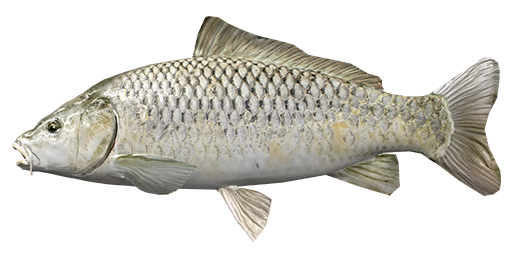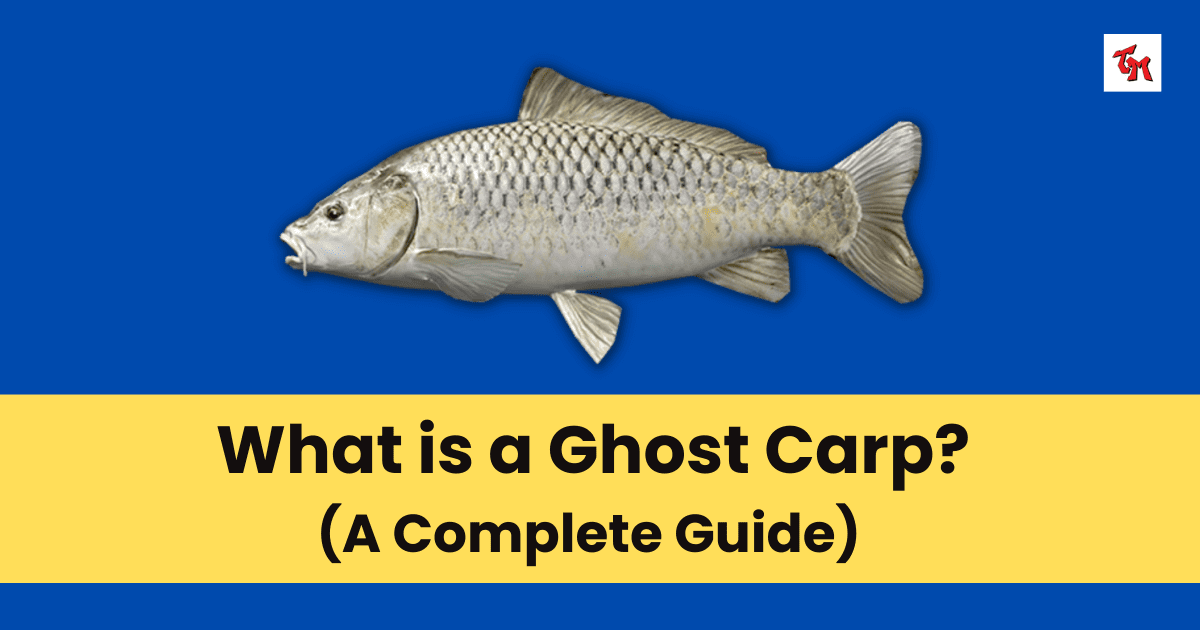Discover the fascinating world of ghost carp in this comprehensive article. Uncover their secrets, habitat, behavior, and more. Dive into the world of these elusive spectral fish.
The ghost carp, also known as the mirror carp or koi, is a captivating and mysterious species of fish that has captured the attention of anglers, hobbyists, and nature enthusiasts alike. Its distinct ghostly appearance and elusive nature make it a fascinating subject for study and appreciation.
If you’re looking for a fishing cooler for your next fishing trip, do check out our guide on the Best Fishing Coolers to Buy in 2023
In this article, we will delve deep into the realm of ghost carp, shedding light on their unique characteristics, habitat, behavior, and more. Whether you’re an angler looking to catch one of these mesmerizing creatures or simply curious about the world of aquatic life, join us on this journey to uncover the secrets of the ghost carp.
Check Out Our Exclusive Guide on How to Fish For Beginners
What is a Ghost Carp?
The ghost carp (Cyprinus carpio), a subspecies of the common carp, is a strikingly beautiful fish that exhibits a unique genetic mutation called leucism.
This genetic anomaly results in a partial loss of pigmentation, giving the fish a pale, ghostly appearance.
The ghost carp’s scales are usually translucent with hues of white, cream, or silver, and it lacks the bold coloration commonly found in other carp varieties.

The ghost carp’s spectral beauty has made it a sought-after species in the world of ornamental fishkeeping.
Its elegance and grace add a touch of ethereal charm to any water garden or koi pond. But there’s more to these alluring creatures than meets the eye.
What is the Habitat of Ghost Carp?
Koi ghost carp are highly adaptable creatures and can be found in various aquatic environments. They prefer slow-moving or still waters, such as lakes, ponds, and large rivers.
These serene settings provide ample opportunities for them to feed on aquatic plants, insects, and crustaceans.
Unlike their more colorful counterparts, ghost carp tend to be less competitive for food, making them a popular choice for stocking in tranquil ornamental ponds.
They thrive in environments with plenty of hiding spots and vegetation, providing them with a sense of security and safety.
What is the Behaviour of Ghost Carp?
Ghost carp are generally solitary creatures, often seen gracefully gliding through the water on their own. They are known for their calm demeanor and cautious nature, which adds to their air of mystery.
However, during certain periods, such as spawning season, they may exhibit schooling behavior, coming together in groups for reproductive purposes.
Their elusive nature and tendency to avoid crowded areas can present a challenge to anglers seeking to catch a glimpse of these spectral beings.
Patience, stealth, and a deep understanding of their habits are key to successfully encountering a ghost carp in the wild.
What is Ghost Carp’s Diet? What Do Ghost Carp Eat?
Ghost carp are omnivorous, meaning they consume a varied diet that includes both plant matter and animal prey. Their menu typically consists of aquatic plants, algae, insect larvae, crustaceans, and small aquatic invertebrates.
In captivity, they readily accept commercially available fish food pellets and flakes.
The secret to a healthy and happy ghost carp lies in providing a well-balanced diet that mimics their natural food sources.
Proper nutrition ensures vibrant colors and overall well-being, making them a striking addition to any pond or aquarium.
Do Ghost Carp Kill Other Fish?
Although Ghost Carp might sometime feed on other fish, but they mostly pose no serious threat to the native species. They are known for sometimes bullying other fishes, however, so they may not be ideal for a community tank!
Can we keep Ghost Carp in Aquaculture?
The ghost carp’s enchanting appearance and calm disposition have made it a popular choice for aquaculture.
These stunning fish can be found in ornamental ponds and water gardens across the world, where they bring tranquility and beauty to their surroundings.
Furthermore, ghost carp are often introduced into ecosystems for their beneficial impact on water quality.
As bottom-feeders, they help control the growth of algae and aquatic plants, promoting a healthier aquatic environment.
Best Aquarium for Ghost Carp

Pennington Aquagarden: The Pennington Aquagarden Aquarium can be home of up to three Ghost Carps and is the best for smaller spaces. This is of dimension 40.15″L x 40.15″W x 40.15″H and is made completely of Aluminium and Fibre.
Are Ghost Carp and Ghost Koi the same?
You might be thinking, what’s the difference between Ghost Carp and Ghost Koi? But to your surprise, Ghost Koi and Ghost Carp are the same fish!
Ghost Carp or Ghost Koi are sometimes also called White Koi and they are all the same fish!
How is the Ghost Carp Fishing Experience?
Anglers seeking to catch a ghost carp are in for a challenge that goes beyond traditional carp fishing. Due to their wariness and sensitivity to disturbances, these spectral beings can prove elusive to even the most skilled anglers.
To increase the chances of a successful catch, it is essential to employ specialized tactics and gear, such as using light tackle, stealthy approaches, and appealing bait.
Can we Breed Ghost Carp?
Breeding ghost carp can be a rewarding endeavor for dedicated fishkeepers and conservationists. However, it requires careful planning and understanding of the species’ specific needs.
To maintain the ethereal beauty of the ghost carp, breeders must select mates with desirable traits, including pale colors and distinct scales.
Ghost Carp in Myth and Legend
Throughout history, ghost carp have captivated human imagination and found their way into myths and folklore.
In various cultures, these spectral beings are associated with spiritual significance and mysterious tales of the supernatural.
How to do Ghost Carp Conservation?
As with many species, ghost carp face environmental challenges that threaten their existence. Habitat loss, water pollution, and invasive species are among the primary threats they encounter.
Conservation efforts play a crucial role in safeguarding these spectral wonders for future generations to admire and appreciate.
Debunking Common Myths about Ghost Carp
With their unique appearance and enigmatic behavior, ghost carp have attracted numerous myths and misconceptions.
Let’s debunk some of the common myths surrounding these captivating creatures.
- Myth: Ghost Carp Are Ghostly Spirits: Contrary to their name, ghost carp are not supernatural beings but are, in fact, a naturally occurring subspecies of the common carp with a genetic mutation.
- Myth: Ghost Carp Are Aggressive: Ghost carp are actually quite peaceful and shy. They are not known for aggressive behavior and are more likely to retreat than confront.
- Myth: Ghost Carp Bring Bad Luck: In some cultures, ghost carp are believed to bring bad luck. However, in reality, they are harmless fish and play a valuable role in aquatic ecosystems.
- Myth: Ghost Carp Are All White: While ghost carp have a pale appearance, they may display varying degrees of coloration, including shades of silver and cream.
- Myth: Ghost Carp Are Rare and Exotic: While their ethereal appearance may give the impression of rarity, ghost carp are not necessarily rare. They are selectively bred for their unique traits and can be found in both the wild and captivity.
- Myth: Ghost Carp Can Pass Through Solid Objects: As captivating as it sounds, ghost carp are bound by the laws of physics like any other fish. They cannot pass through solid objects.
Ghost carp, with their mesmerizing spectral beauty and mysterious allure, continue to captivate the hearts of fish enthusiasts and nature lovers alike.
Their unique appearance, peaceful demeanor, and ecological importance make them a truly fascinating species to explore and protect.
As we continue to learn more about these elusive beings, it is crucial to recognize the significance of preserving their habitats and maintaining the delicate balance of aquatic ecosystems they inhabit.
By valuing and safeguarding the ghost carp, we not only cherish their spectral splendor but also contribute to the well-being of our natural world.
FAQs about Ghost Carp
Q: Can Ghost Carp Be Kept in Ponds with Other Fish?
Yes, ghost carp can coexist with other fish in ponds. However, their peaceful nature may make them susceptible to competition for food, so proper feeding strategies should be implemented.
Q: Do Ghost Carp Require Special Care in Captivity?
Ghost carp require similar care to other carp varieties in captivity. Providing clean water, a balanced diet, and ample space to swim are essential for their well-being.
Q: Can Ghost Carp Survive in Cold Temperatures?
Ghost carp are hardy fish and can survive in cold temperatures. They are well-suited to temperate climates and can endure mild winter conditions.
Q: Are Ghost Carp Endangered?
As a subspecies of the common carp, ghost carp are not classified as endangered. However, their habitats and populations may be impacted by environmental changes and human activities.
Q: Are Ghost Carp Suitable for Beginners in Fishkeeping?
Ghost carp can be a good choice for beginners in fishkeeping due to their hardiness and adaptability. However, it is essential to research their care requirements thoroughly before getting one.
Andrew likes to call himself a ninja of the fishing world! He went on his first fishing trip when he was just 7. That’s when he fell in love with fishing. Apart from fishing, Andrew is searching for new gear and ways to fish better. Thus, making fishing simple!
